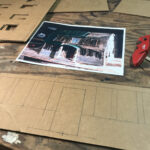Downtown parks serve as vital public spaces accessible to everyone, distinguishing themselves from neighborhood centers. Unlike localized neighborhood parks, a downtown park offers a unique sanctuary amidst bustling urban development, providing a space for relaxation and respite during the workday. These parks act as central hubs, often embodying and reflecting the very identity of a city. While iconic examples like Millennium Park in Chicago and Boston Common are widely recognized, locally cherished spots such as Pioneer Square in Seattle hold equal significance. Pioneer Square exemplifies inclusivity, drawing people from all walks of life, including those experiencing homelessness, to engage in activities like board games or ping pong, enjoy lunch, or simply stroll amidst the surrounding restaurants and offices.
Nashville’s Church Street Park mirrors Pioneer Square in its diverse potential, yet its development has been a subject of intense discussion for over two decades. Founding members of our organization recall a particularly contentious Urban Design Forum in 1997 centered around Church Street Park, where a newcomer engineer’s presentation faced harsh criticism due to the lack of consensus on the park’s design. Despite these early disagreements, the completion of the Nashville Public Library across from Church Street Park in 2001, aligning with the capitol building’s axis, underscored the area’s civic importance. This development highlighted the potential for civic unity fostered by and within these public resources.
However, the Church Street Park conversation remained largely stagnant for years until a land swap proposal emerged. This proposal suggested replacing the park with a high-rise development and relocating the park to a less central location, ostensibly to resolve existing design challenges. This proposition ignited critical questions about the inherent value of the park’s location, accessibility for all community members, and whether the design fostered inclusivity or exclusion. In 2018, our blog series actively championed the preservation of Church Street Park while presenting design visions aimed at enhancing the area and addressing previous concerns. Since then, positive momentum has gathered, notably with the establishment of the Historical Capitol Corridor Foundation. This foundation is dedicated to the revitalization of the area along Anne Dallas Dudley Boulevard, signaling a renewed commitment to Church Street Park and its surrounding civic landscape.


